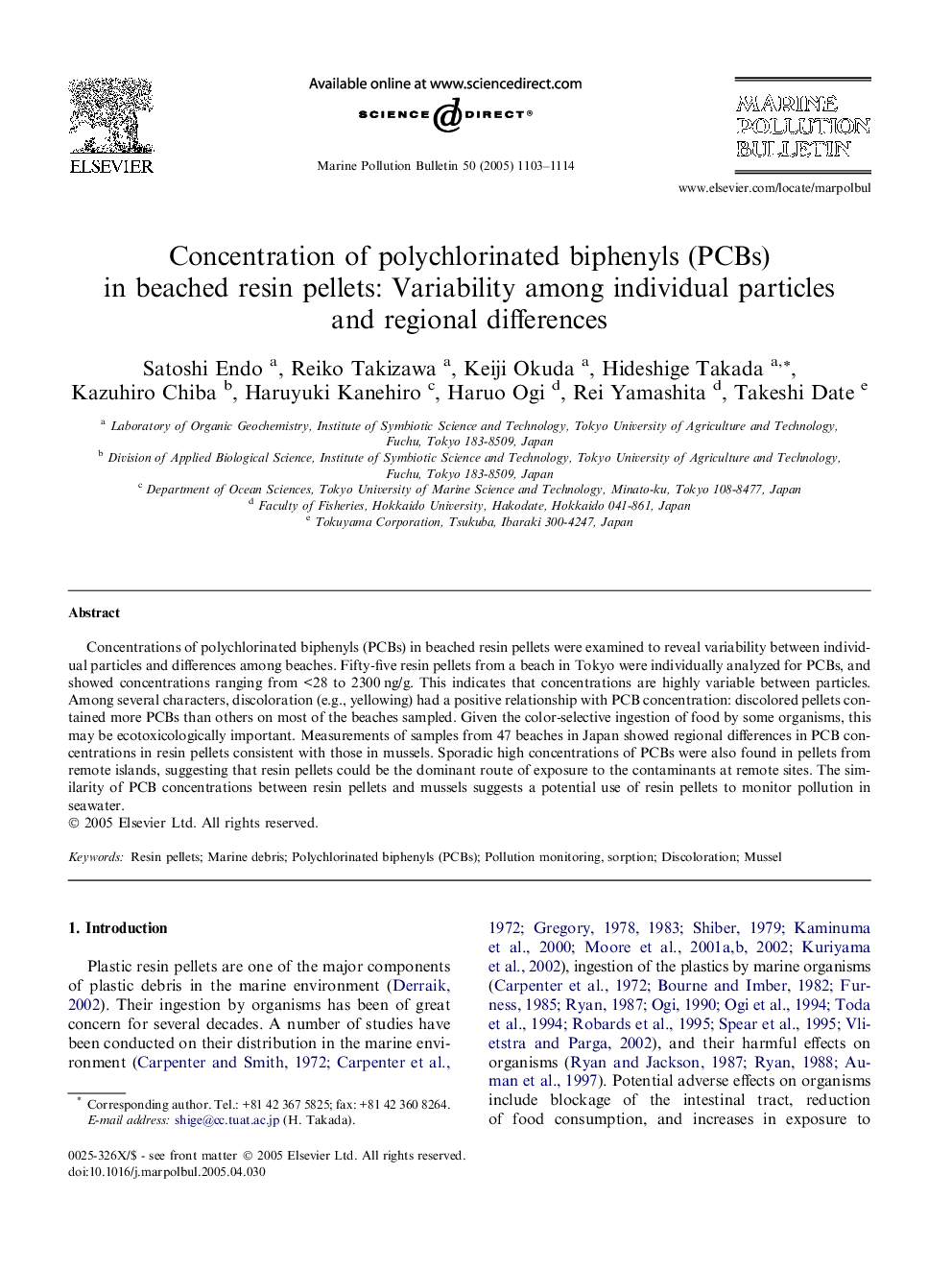| Article ID | Journal | Published Year | Pages | File Type |
|---|---|---|---|---|
| 9466096 | Marine Pollution Bulletin | 2005 | 12 Pages |
Abstract
Concentrations of polychlorinated biphenyls (PCBs) in beached resin pellets were examined to reveal variability between individual particles and differences among beaches. Fifty-five resin pellets from a beach in Tokyo were individually analyzed for PCBs, and showed concentrations ranging from <28 to 2300Â ng/g. This indicates that concentrations are highly variable between particles. Among several characters, discoloration (e.g., yellowing) had a positive relationship with PCB concentration: discolored pellets contained more PCBs than others on most of the beaches sampled. Given the color-selective ingestion of food by some organisms, this may be ecotoxicologically important. Measurements of samples from 47 beaches in Japan showed regional differences in PCB concentrations in resin pellets consistent with those in mussels. Sporadic high concentrations of PCBs were also found in pellets from remote islands, suggesting that resin pellets could be the dominant route of exposure to the contaminants at remote sites. The similarity of PCB concentrations between resin pellets and mussels suggests a potential use of resin pellets to monitor pollution in seawater.
Keywords
Related Topics
Physical Sciences and Engineering
Earth and Planetary Sciences
Oceanography
Authors
Satoshi Endo, Reiko Takizawa, Keiji Okuda, Hideshige Takada, Kazuhiro Chiba, Haruyuki Kanehiro, Haruo Ogi, Rei Yamashita, Takeshi Date,
